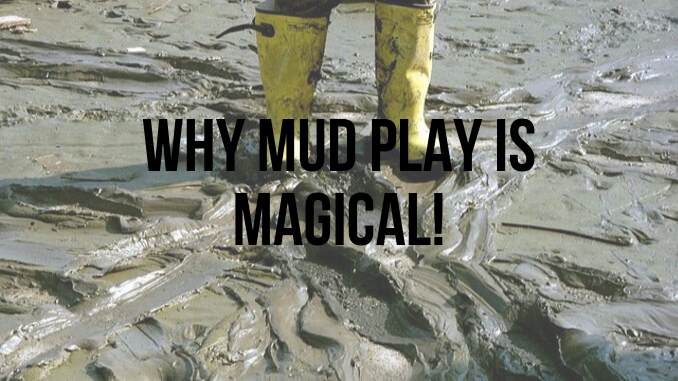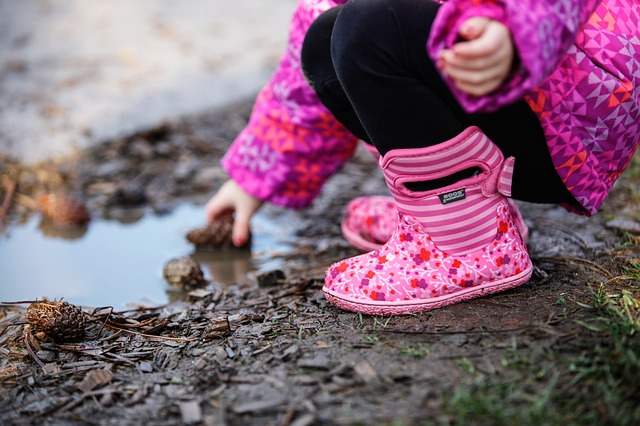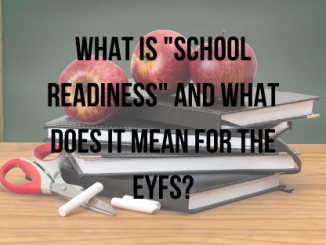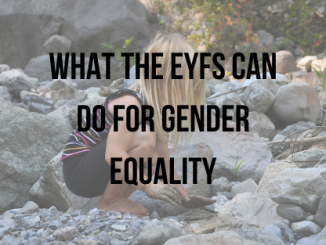Had you looked for me as a 5-year-old and you would most likely have found me somewhere in the garden, doing something with mud. Look for me as an Early Years Teacher and you will most likely find me somewhere in the garden, doing something with mud!
For many adults, our fondest memories of childhood involved the outdoors, and often mud pies! Mud is an extremely sensory experience and many children are naturally drawn to it, it opens up a multitude of possibilities for exploration and experimentation and when we’re thinking about the Early Years, borders on magical!
Mud play is good for our physical health
We live in a world of antibacterial cleaners and hand soaps, where floors are steamed clean and dirt is seen as an enemy, but research is beginning to suggest that this obsession with cleanliness in wreaking havoc with children’s immune systems. Exposure to dirt and germs help to build children’s immune systems and without this, children are more likely to experience allergic or asthmatic responses to normal environmental triggers. Playing with mud gives our bodies a chance to build up immunity to all kinds of germs.
Mud play is good for our mental health
Mud play usually happens outdoors, which in and of itself contributes to a better mental state of wellbeing, but recent research has demonstrated that mud contains Mycobacterium Vaccae, a specific kind of microscopic bacteria, which increases the levels of serotonin in our brains. Serotonin is an endorphin that soothes, calms, and helps us to relax. Some scientists go so far as to suggest that regular exposure to these bacteria may make a child less likely to suffer from depression.
Mud play is good for our planet
Not only is mud play fairly sustainable, with most mud being returned to the earth, it also builds children’s connections with nature. Playing in the mud allows children to develop an appreciation for the environment. Today, “Children’s access to outdoor play has evaporated like water in the sunshine” (Rivkin, 1995) and many children today have limited opportunities to play outdoors. It is difficult for children to care about the environment, and respond to a climate crisis if they have not had the chance to spend time in nature. Mud play gives children this opportunity.
Mud play is good for children’s mental capacity
The same release of serotonin that occurs when playing in dirt containing Mycobacterium vaccae has also been shown to improve cognitive function. This means that not only are children more ‘ready to learn’ whilst playing in the mud but also that leaning done under these conditions is more easily retained.
Mud play is all-inclusive
There are not many activities in the EYFS that can be said to be all-inclusive and suitable for all ages and stages of development. Mud play allows children to play at their own developmental level. So, whilst some children will primarily focus on the sensory experience of mud, others will build vocabulary around this whilst others might experiment with how they can make the mud more slippery, crumblier, grittier and so on.
Mud play is open-ended
The EYFS makes much of the use of open-ended resources and mud is an extremely open-ended resource! The possibilities for mud play with young children are almost limitless. Mud itself varies greatly in texture and colour, it can be added to with natural resources and enhanced with the provision of cups, pots, tubes, guttering and so on ad Infinitum!
Children benefit from not feeling hemmed in by any expectations or instructions, and being able to explore and play their own way. Mud play allows ample time for this and focuses on the process of exploration rather than a finished product. Children thrive in this kind of working atmosphere; where they are free from pressures of ‘getting it right’
The EYFS’ Characteristics of effective learning specifically mentions children using their senses to explore the world, and engaging in open-ended activities; mud play certainly fits these criteria!
Mud play is scientific

Maria Montessori (1988) advocated the provision of gardens where children could explore water and earth for themselves, viewing the earth’s different states and properties being seen as an explorative and scientific activity.
In mud play, children demonstrate their emerging skills in maths and science as they measure out ingredients for their mud pies, discuss quantity, solve problems, experiment, re-evaluate and make comparisons.
Mud play is creative
Mud can be used for painting, sculpting, moulding, mark making and so on! Its sensory properties are different to crayons, paint, dough, clay or other commonly accessed resources and it responds differently to pressure, mixing and so on too.
Mud play being so open-ended encourages creative thinking without worrying about ‘mistakes; this builds children’s sense of competence, self-esteem and allows them to ‘let go’ and create freely.
Mud play is physical
Mud Play is also good for children’s physical development, supporting both gross motor skills and fine motor skills. Gross motor skills can be supported through slipping, sliding, digging, painting on a large scale and fine motor skills and hand strength as children, press, squeeze, manipulate and sprinkle mud with their hands.
Mud play is social

Mud play often involves elements of role-playing and this promotes pro-social behaviours as children work together to build up a narrative. Mud play also offers the opportunity to practice social skills such as cooperation and negotiation, as children share resources and work together towards a common purpose.
Mud play is magical!
I’ve played alongside children in a variety of settings, with lots of different resources and nothing seems to beat mud! Mud somehow seems to be an intrinsic element of childhood, real awe and wonder stuff!
It is so important that we give children uninterrupted time to play freely with mud, outdoors, experiencing a part of nature. It is both a rich learning experience and a rich life experience.
References
Montessori, M (1988) The discovery of the child Oxford: Clio Press
Rivkin, M.S. (1995) The great outdoors: Restoring children’s right to play outside. Washington, DC: NAEYC.







